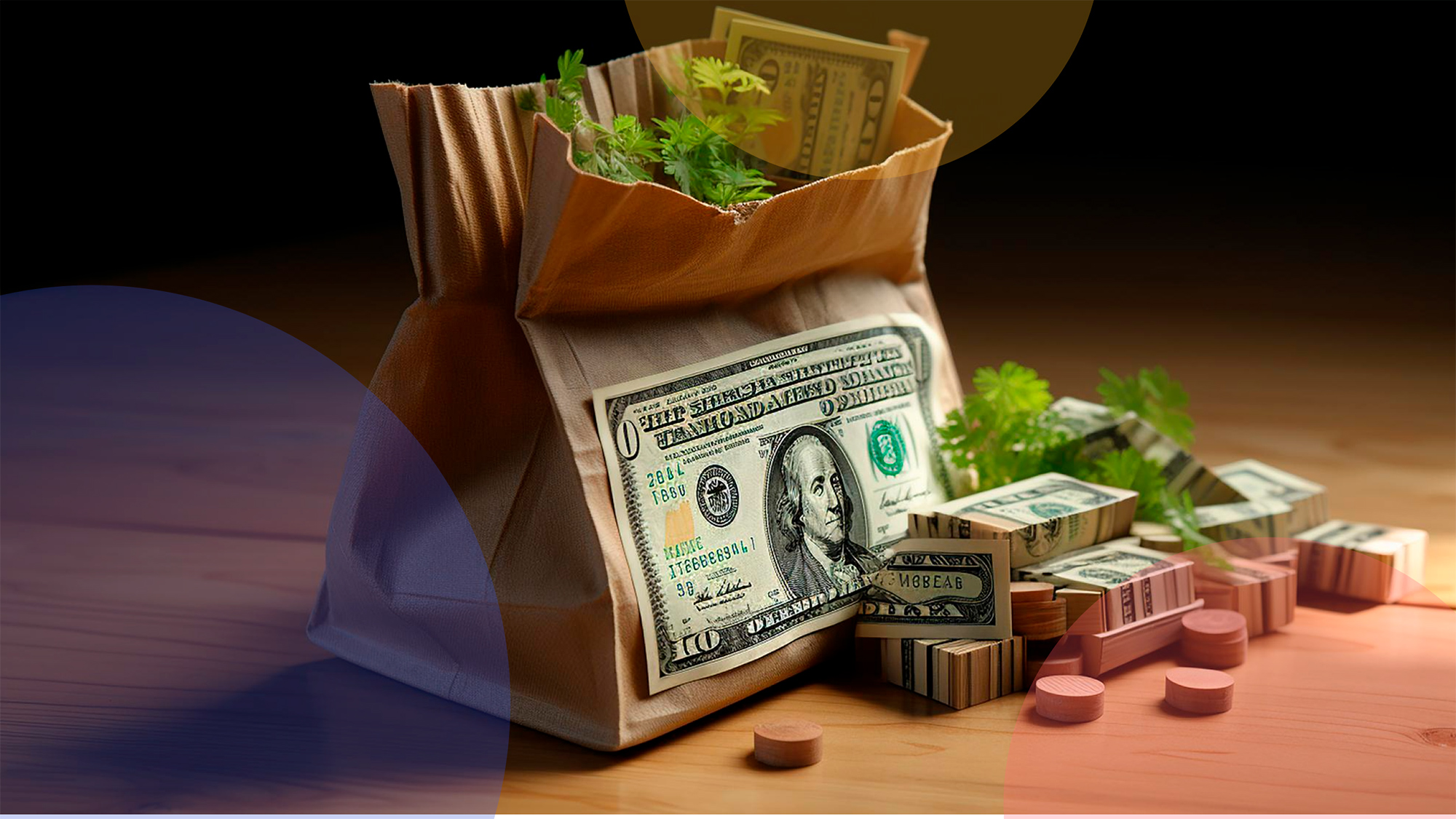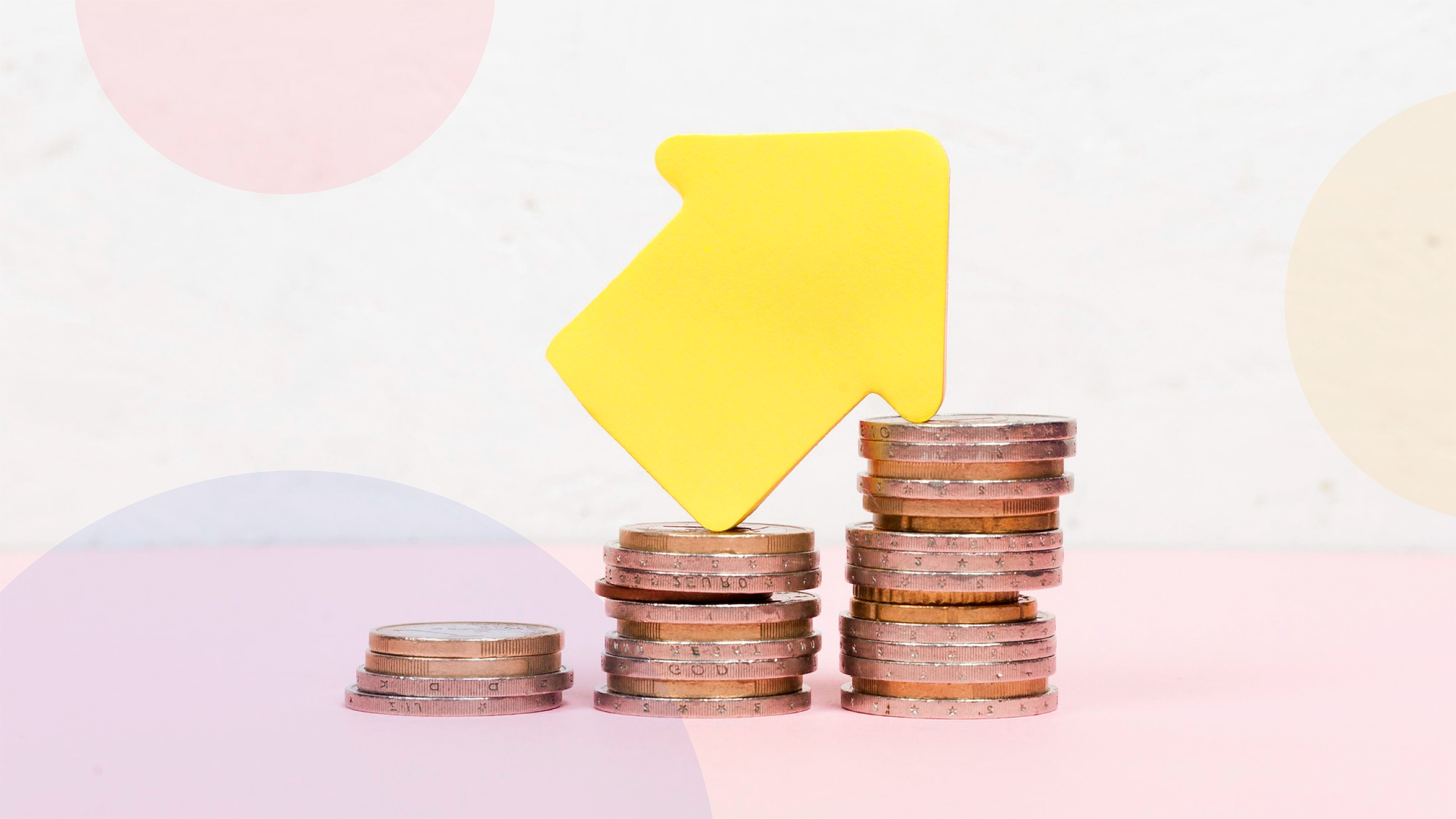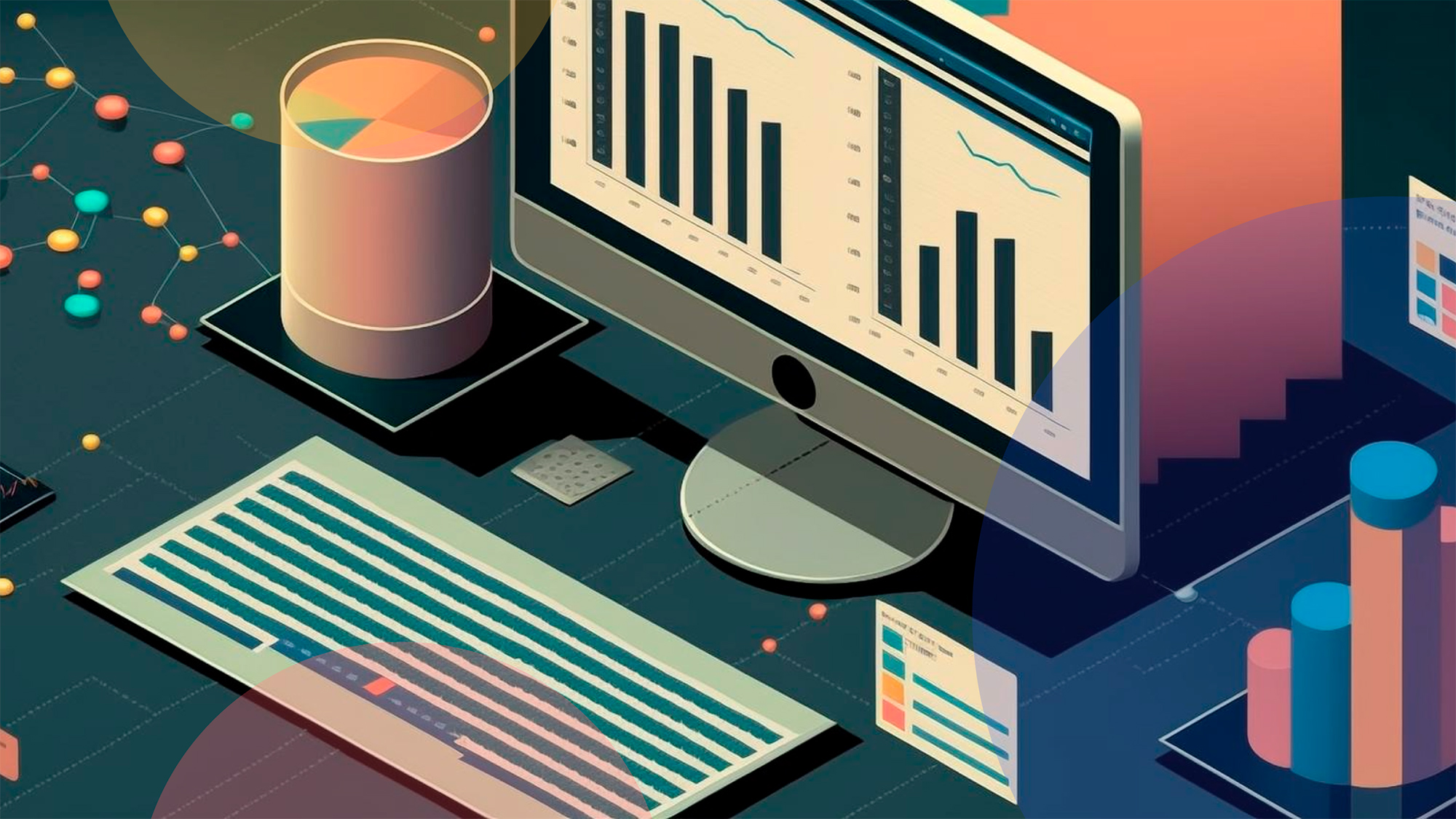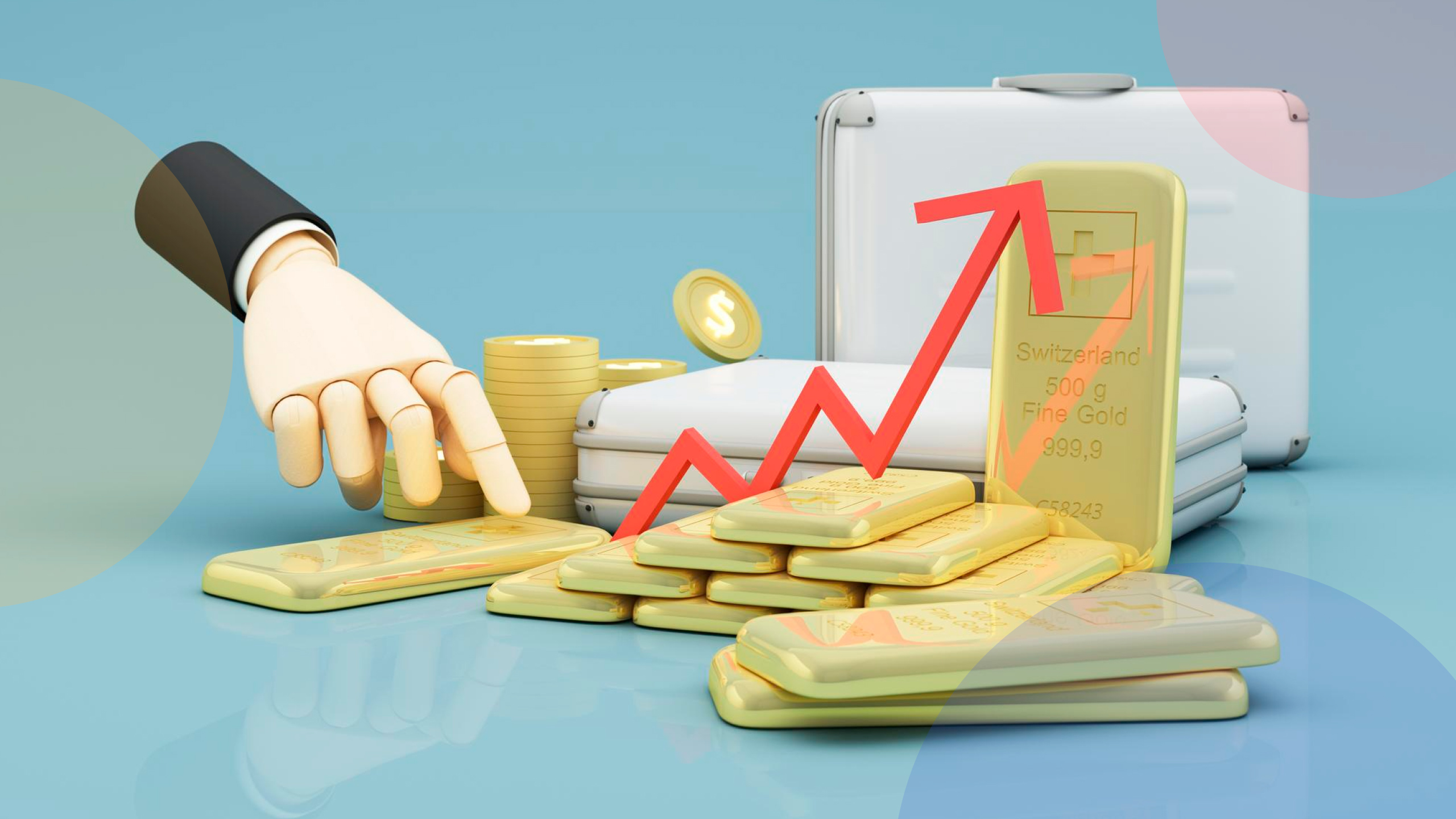The ability to forecast the income that financial assets can bring is one of an investor’s essential skills. First of all, developing it requires an understanding of the concepts that characterize potential profit.
Let’s compare dividend yield vs interest rate. We will explain the meaning of these terms, when they are used and what is the fundamental difference between them.
Table of Contents
Dividend Rate vs. Dividend Yield: An Overview
The dividend rate represents the amount of distributions an investor receives from a company in a year, provided in absolute terms. The term dividend per stock may be used as a synonym.
Dividend yield is a value expressed as a percentage. It is calculated as the ratio of the amount paid to the current value of the stock.
The key points of comparison dividend yield vs dividend rate are given in the table.
| Dividend rate | Current dividend yield | |
| Dimension of value | Dollar (or other currency) | Percentage |
| Calculation method | Dividing the total amount allocated to dividends by the number of stocks issued. Or multiplying the last dividend per stock by the number of installments per year | Dividing the annual dividend per stock by the current stock price. Next, multiplying by 100 to get the percentage value |
| Tax consequences | The higher the figure, the higher the tax | The amount of tax has no direct correlation with the value of this indicator |
| Type of value | Remaining unchanged after the dividend declaration date | Fluctuates as the stock price changes |
Different interpretations of the term dividend rate can be found in many sources. It is used as a synonym for dividend yield and in contrast to the percentage yield given by deposits and bonds.
What Is a Dividend Rate?
This term can be applied to different quantities. It is most often used when referring to:
- payments expected to be made by an individual company;
- the return on the stock of an ETF or mutual fund;
- the amount that the portfolio as a whole will return for the year.
All stock dividends can be divided into regular dividends, which the company consistently pays quarterly/annually, etc., and special dividends. The latter are declared when a one-time significant profit has been made.
When speaking about the dividend rate, the amount of regular payments for the year is sometimes meant only. Special dividends may or may not be included in its calculation.
This is explained by the fact that the dividend rate is the amount of payment expected to be made. And special dividends are difficult to predict. But when the company has already declared them, most investor services take this amount into account in the data published.
Dividend Rate in the context of stock investments
Here is an example of how a stock owner can calculate the dividend rate and dividend yield.
Apple has a quarterly dividend payment period. The last payment was $0.24 per stock. Multiply $0.24 by 4 (because there are 4 payments per year) to find the first value. Therefore, Apple’s dividend rate is $0.96.
This calculation is approximate, as the amount named on the last dividend declaration date is used. By no means all companies make stable, identical payouts. There may be a situation when the next time the shareholders’ reward will be less. To minimize the likelihood of this, you should choose issuers with a stable payment history.
To calculate Apple’s current dividend yield, divide the annual dividend by the current price and express the resulting value as a percentage.
(0,96/189,7)*100 = 0,51%
When it comes to the personal dividend yield of an individual investor (or their portfolio), the annual dividend is divided by the original amount invested. For example, a person bought Apple stock for $130. For the individual, the dividend yield of the investment would be 0.74% ((0.96/130)*100).
Dividend Rate in the context of deposit accounts
In most cases, the terms dividend rate and dividend yield are used in relation to investments in stocks, REITs, exchange-traded funds and mutual funds.
The contrast between annual percentage yield vs dividend rate and the use of different terms for income from equity and debt instruments is due to the difference in their characteristics. The former is volatile and optional. Companies are not obliged to pay dividends and are free to change the amount depending on their financial situation.
Interest payments on deposits or bonds are fixed. Failure to do so means default by the borrower. Even bonds with a variable coupon usually do not assume that the issuer of the security will set it equal to zero.
But theoretically, the concept of dividend rate can also be applied to payments from a bank for placing money in a savings account or bonds. In such a situation, we are talking about a value expressed as a percentage. And the term itself is used as a synonym for the concept of annual percentage rate (APR). That is, this is the value on the basis of which the bank calculates the amount of interest at the next payment.
Most often, the annual dividend rate is the income that brings the investor the placement of money in credit unions on the account of mutual funds. The principle of their work is similar to a savings deposit with a capitalisation period of 1 quarter. But from a legal point of view, such an investment is the purchase of a share.
What is Annual Percentage Yield (APY)?
Annual Percentage Yield (APY) is the actual amount of income the investor will receive per year when using an asset with compounding interest. I.e. the concept itself already contains the capitalisation condition. When it comes to simple interest, APY is equal to the annual percentage rate.
Capitalisation means the interest paid to the same account that holds the main body of the deposit. They are attached to it with the condition that in the next period, the interest will accrue on the entire amount, not just the original deposit. For example:
- a person places $1000 in a high-yield savings account at an APR of 5%;
- in the first month the income is $4.16 (5% of $1000 divided by 12);
- the deposit grows to $1004.16, from this amount the income in the second month is calculated.
The term is more often applied to banking programmes – certificates of deposit, high-yield savings accounts, etc. But it can also be used to measure income from securities when it is a question of their owner reinvesting coupons and dividends in full.
The main function of the APY indicator is the ability to quickly compare the efficiency of investing money in assets with different capitalisation periods and rates of return. The main disadvantage is the possibility of data distortion due to the fact that tax liabilities and some other factors are not taken into account.
The Annual Percentage Yield is the value that a bank or credit union customer sees in a prospectus. The Annual Percentage Yield earned (APYE) is shown on the statement provided to them at the end of the year. The percentage is the ratio of the income earned during the year to the average daily balance.
The APYE is affected by withdrawals and deposits made by the client during the year. This rate applies to money market, current and savings accounts. Since certificates of deposit do not allow movement of funds (with few exceptions), the APYE for them will be equal to APY.
How To Calculate APY: APY Formula
Usually the annual percentage yield is published by banks in their advertising brochures. But when a person wants to calculate it on their own, they can use the formula below.
For example, an investor places money on deposit with an APR equal to 5%. If capitalized monthly, the APY will be 5.116%.
In a comparison of annual percentage yield vs dividend rate (dividend yield), the former will be higher when the person reinvests the payments received. When spending that money on living expenses, the values will be equal.
Comparing APY Between Investments
When an investor is choosing between several types of investments, it is better to compare them by annual percentage yield rather than by APR. This will allow choosing the most efficient option.
For example, let’s compare 4 ways to invest money for a year:
- High-yield savings account with monthly capitalisation. With an APR of 4%, the annual percentage yield will reach 4.074%.
- Certificate of deposit with interest payment at the end of the year. APR on such products is usually higher. But due to the absence of capitalisation it will be equal to the annual percentage yield. That is, it is advisable to choose this option over a high-yield savings account when the APR is more than 4.074%.
- Stock with quarterly dividend paid. With a stable asset price and a dividend yield of 4%, reinvestment will yield an annual percentage yield of 4.06%.
- A bond with a semi-annual coupon payment. At a yield of 4%, the APY will be 4.04%.
In the example of bank accounts and certificates of deposit, the calculation of the annual percentage yield is accurate. For bonds (except Series I) and stocks, it is approximate. The reason is that the owner of securities runs the risk of being unable to reinvest the entire payout.
For example, a stock is worth $250 and the dividend value is $0.75. Let’s say a person owns 350 stocks. This will pay out $262.5. Then the person reinvests $250 of that by buying 1 more stock. And next time gets $0.75 more.
But after buying 1 stock, the individual will still have $12.5 left. The person will have to replenish the brokerage account with their own money to reinvest it. Other options are to invest in a cheaper asset or leave it until the next dividend arrives. Whichever way the investor chooses, the real annual percentage yield will already be different from the calculated one. An alternative is to use brokerage services, providing an opportunity to buy stocks in fractions.
An additional factor that reduces the real APY of securities is the cost of broker’s commissions when reinvesting coupons and dividends.
Another important issue is that the annual percentage yield should not be the only criterion for choosing an investment asset. It is necessary to consider to what extent its properties meet the investor’s needs. For example, a high-yield savings account allows you to constantly replenish the deposit and, most importantly, to withdraw money freely. A certificate of deposit does not give such freedom.
Is APY Variable?
Whether the annual percentage yield is a constant or variable rate depends on the properties of the financial product in question. For example:
- Money market accounts and high-yield savings accounts have variable interest rates. Banks have the right to change the APR at any time. As a consequence, the APY changes as well.
- Certificates of deposit usually allow you to fix the APR for the term of the contract. The annual interest yield remains constant during this time.
- Bonds can have both constant and variable yields.
- The amount of the dividend per stock, and therefore the yield received as a result of reinvestment, may change with each payment.
Comparing dividend rate vs annual percentage yield
Both indicators are used to measure return on investment (ROI). They are key factors in selecting assets to invest in.
The normal values of these ratios do not remain constant over the years. Typically, in a comparison of annual percentage yield vs dividend rate, the latter wins. But in some periods of the economic cycle, assets such as bank deposits and bonds are favored.
In addition to external factors, a company’s dividends and the annual percentage yield that its stock earns are also influenced by its own business performance.
The main external and internal factors affecting the return on investment are discussed below.Market Conditions and Economic Trends
Dividend yields depend on 2 factors – the overall state of the economy and the specifics of the industry in which the company operates.
During a recession, businesses face a reduction in profits. This often leads to a decrease in the amount of dividends. During economic growth, the company’s cash flow is higher, which means it has more opportunities to pay out to shareholders.
But this rule does not apply to all companies. There is an index of dividend aristocrats. It includes issuers that are not subject to the described fluctuations. They have been paying dividends for 25 years and more, increasing their size.
Each industry has its own dividend yield rate. For example, for a company in the IT sector, it ranges from 0.5%-1.5%. And many REITs yield their shareholders 5%-10%.
Interest rates on deposits and bonds depend on the state of the economy. They rise during periods of high inflation and fall when prices slow down and during recession.
Interest Rate Fluctuations
The interest that banks and credit unions pay to deposit money in accounts is tied to the Fed Funds rate. In times of recession, the rate is lowered to support business growth. That means the annual percentage yield on deposit products falls. During high inflation periods, the Fed raises the Fed Funds rate. Investing money in deposits or bonds becomes more profitable.
Rising interest rates are a negative factor for the stock market. Low-risk instruments become attractive to investors. Most companies cannot match their dividends to the rate of return required by the market. Therefore, stock prices fall.
At the same time, the dividend per stock may decrease. This also happens due to the increase in interest rates. This phenomenon causes the company’s costs to rise and its net profit to fall.
Company Growth
Growth companies usually do not pay dividends or distribute a small share of profits to shareholders. The higher the growth potential of the business, the more likely that all revenues will be used to expand the business.
This makes the company’s stock price rise. It compensates for low dividend yields. Many investors favor such issuers because it allows them to save on taxes.
Stock Prices
The current dividend yield is calculated by dividing the annual dividends by the stock price. If the amount of payments remains unchanged, the indicator will be the lower, the higher the quotations are. But the final return on investment may be high. In addition to dividends, the investor also receives capital appreciation.
Company Fundamentals
The profitability of a stock investment is also affected by the company’s fundamentals. A business with the following characteristics can pay maximum dividends:
- low debt;
- stable high cash flow;
- moderate capital expenditures.
It is likely that the stock of such a company will be highly appreciated by the market. And even in periods of crisis their quotations will be relatively stable.
Calculate Investment Growth with Dividend Rate and APY
When a person plans to reinvest all distributions received, they can project their capital growth based on expected dividends and APY. For this purpose, one can use both independent calculations using Excel and numerous online compound interest calculators.
But you need to remember that such a calculation is approximate. Interest rates never remain constant over the years. And the amount of capital is affected not only by the reinvestment of dividends paid, but also by the value of assets. The latter can fluctuate significantly depending on the market situation.
Below is a calculation on a compound interest calculator based on the assumption that each year a person reinvests an amount of $1000. And the average annual growth in stock value is 8%.
At the same time, the final result may turn out to be greater than expected. As the number of stocks will increase with reinvestment, the amount of dividends a person will receive will also increase.
How To Find the Best APY
It is most advisable to first determine the type of instrument you plan to use and then look for the option with the highest annual percentage yield. There are online services designed to quickly compare offers from multiple banks or credit unions.
They are proper for finding the best terms on savings accounts, money market accounts and certificates of deposit. Separate screeners can help you find the most favorable bonds and sort them out by other attributes – duration, credit risk, etc.
Choosing the best financial product can be entrusted to online services. But it is useful to know a few facts:
- the highest yields are usually offered by online banks;
- the high APY stated in the advertising prospectus may apply only to large deposits, and a different rate will apply to smaller amounts;
- an offer with a high APY may only apply to new customers, and for a limited period of time, then the rate will be reduced.
Also, an APY above the market average can hide high commissions, restrictions on the use of money, etc. Therefore, it is important to analyze all conditions.
What is more important: dividend rate or dividend yield?
These terms are mostly used as synonyms. But even when treating the first concept as an absolute value, these stock parameters remain closely related. Therefore, it cannot be said that the dividend rate vs yield is correct, and one of the indicators is better or worse than the other.
Which of the values an investor should focus on depends on their strategy. For a person interested in stable passive income, it is more useful to pay attention to the dynamics of the absolute size of shareholder remuneration in dollars. Fluctuations in the current yield fail to reflect the real change in the size of payments. This indicator grows even when dividends decrease, when stock prices also fall.
When an investor is looking for investment options with maximum profitability, the current dividend yield may be of interest. But companies that have a dividend yield higher than the market average are rarely good payers. ETFs and mutual funds are used to reduce the risk of investing in such stocks.
The Bottom Line
The terms dividend rate, dividend yield and annual percentage yield are similar to each other, so beginners in investing may get confused. But you need to have a good understanding of the differences between the two to choose a financial asset wisely.
Let’s recap the key takeaways:
- Dividend rate is an absolute value that allows an investor to forecast their profit and capital growth rate.
- Dividend yield is a percentage value. Using it, you can quickly compare the profitability of owning stocks that differ greatly in price.
- Annual Percentage Yield – an indicator that takes into account not only the return on the initial capital, but also the benefit from reinvestment. It is reasonable to use this value when comparing assets with different capitalisation periods. But it is more often used when it comes to placing money on deposit.
It would be a mistake to try to compare financial assets in the format of annual percentage yield vs dividend rate. When it comes to choosing between stocks and savings accounts, it is acceptable to compare only the dividend yield and the annual interest rates.
FAQ
Why is the dividend rate different from the APY?
Even when the term dividend rate is synonymous with dividend yield, this indicator is still completely different from APY. It reflects the rate of return per stock of the company. It does not matter as to how a person disposes of the money received. APY takes into account the benefit of capitalisation or reinvestment, which means that it automatically implies that the funds will remain in the bank/brokerage account.
What is the annual dividend rate?
This term is usually used to refer to deposits placed with a credit union rather than a bank. It is an equivalent of the annual interest rate. That is, the value that will be used in calculating the amount of interest income on the next accrual date. It can also be used when referring to the amount of dividends per stock paid by a company for the year.
Which is better dividend or yield?
It is incorrect to say that one indicator is better than the other. Dividends are expressed in absolute figures. Dividend yields are expressed in percent. These values are used when analyzing investment assets for different purposes.
What is the difference between dividend yield and dividend rate?
These terms are often used synonymously. Sometimes the dividend rate refers to the amount of payout that is paid out per stock of a company during the year. It is an absolute value that will allow an investor to answer the question of how much money they will receive. Dividend yield is the percentage of dividend per stock to its price. It answers the question, which stock is more profitable to buy from the point of view of profitability of investments taking into account the nearest payments.
What is a good dividend yield?
The dividend yield rate is tied to the country and industry in which the company operates. For the broad US market, a rate of 2% to 6% is considered good. Individual companies can offer up to 10% to 12%. More often these are REIT funds, whose stock prices hardly ever grow. They may also be one-time payments rather than a steady level of dividends per stock.







